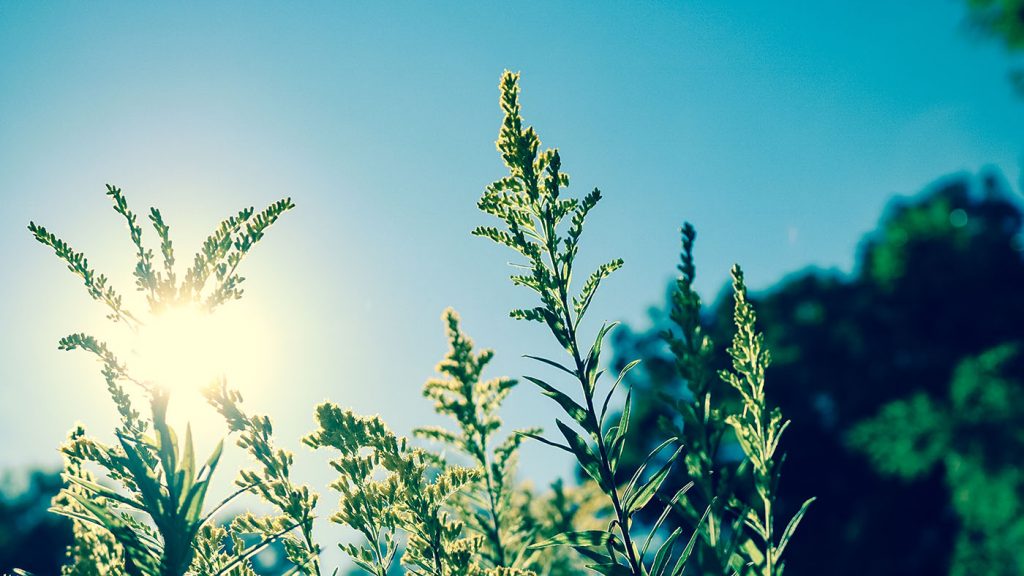
Nothing ruins a beautiful, lush lawn faster than nasty summer lawn diseases! Luckily, it’s as easy as 1, 2, 3 to protect your lawn. Just remember these steps: prevent, identify, and fight. Read on to learn more about which summer lawn diseases you should be on the lookout for. And how you can prevent or fight them, as needed!
Prevent Summer Lawn Diseases
When it comes to preventing summer lawn diseases, the best offense is a good defense. That means you should invest your time and money in keeping your lawn strong and healthy. This will prevent most summer lawn diseases from taking root. Read on for tips on how to best prevent lawn disease on your turf.
Balance soil pH
Most lawn grasses prefer slightly acidic soil, around 6.0 to 7.0 pH. This is the level where essential nutrients stay readily available to the grassroots. Regular soil testing and appropriate soil amendments will help keep your grass healthy and strong. Thus, making your grass more capable of staving off disease.
Fertilize properly
Underfertilizing can leave your grass undernourished. However, overfertilizing promotes weak, rushed growth. Thus, both of these mistakes set up lawns for disease. Always fertilize your lawn with quality products. Look for slow-release options that release essential nutrients at the right levels and times. Follow label instructions for proper amounts, and keep your lawn well-fed.
Water well for health, strength, and resilience
To keep your lawn healthy, Irrigate it early in the morning. This is when evaporation rates are low and the emerging sun speeds drying. Thus, reducing the amount of time the grass spends wet.
Additionally, you should not water frequently. Rather, water deeply, one to two times weekly. This will encourage strong, deep, drought-tolerant roots. This is especially important for turf types that are meant to be drought-resistant and save you money on water bills.
Choose water-wise turfgrass
Use grasses recommended for your region and suited for your yard’s sun exposure. The right grass is key to avoiding disease. For example, TifTuf Bermuda is one of the very best drought-tolerant grass. It offers high resistance to traffic and fast recovery from wear, tear, and drought. If cared for properly, this resilient turf will also stand up well against summer lawn diseases.
Mow properly
Mow at heights recommended for your grass type. For example, for TifTuf Bermuda mentioned earlier, the appropriate mowing height is 1/2 to 2 inches. Keep your mower blades sharp, and mow according to grass growth. That may mean that during peak growing season you are mowing two or even three times per week. Mow based on the growth you see, not specific days on the calendar.
Remove just one-third of the blade height in a single mowing. If you suspect a summer lawn disease, always collect and dispose of lawn clippings. Some diseases spread through clippings can infect your compost pile. However, if your grass seems healthy, you can leave some fresh clippings on the lawn as a natural fertilizer.
Dethatch your lawn
Thatch up to 1/2 inch thick acts like beneficial mulch. However, thatch amounts beyond that restrict water and air and encourage disease. Almost every lawn needs dethatching about once a year. To check your lawn, just work your fingers into the grass and note the depth of the thatch layer. Dethatch cool-season grasses in fall, and warm-season types in early spring.
Aerate the soil
Compacted soil, like thatch, can restrict water and air and cause disease to take hold. Reduce compaction with regular aeration so air, sun, and moisture reach their goal and keep disease at bay.
Aerating is only truly necessary when there’s a problem of compaction. If you have high-traffic areas or heavy clay soil, you will likely need to aerate every year. If you have sandy soil or your lawn is growing well, aerating the lawn need only take place every 2-3 years. Both dethatching and aerating your lawn will improve air, nutrient, and water penetration into the root zone of your grass.
Identify Common Summer Lawn Diseases
While you do your best to prevent disease, you may still notice some problem areas. The best way to address issues is to properly identify the culprit. Read on for some of the most common summer lawn diseases and how you can identify them.
Dollar spot lawn disease
The telltale sign of this disease is silver-dollar-size circles appearing in your lawn. These can spread up to 6 inches wide and eventually merge into large, irregular blocks. When dollar spot lawn disease takes hold, you’ll see the grass develop straw-yellow spots that look water-soaked. Morning light will reveal cobweb-like growth.
Late spring through fall, and mild-to-warm temperatures support dollar spot disease development. Underfertilizing, excessive moisture, drought stress, and thatch leave grasses susceptible to this issue.
Gray leaf spot lawn disease
When gray leaf spot lawn disease is present, you may notice small, irregular patches that grow and join together to form large areas of damage. The grass blades will develop small, bleached-out spots with dark brown edges. The spots turn fuzzy and gray when wet.
Moderately high temperatures with high precipitation from spring to fall speed gray leaf spot’s development. Additionally, poor air circulation, overwatering, overfertilizing, and too much shade can contribute to the spread of the disease.
Leaf spot lawn disease
When grasses display elongated, oval spots with dark purple-brown margins and brown centers, it’s a sure sign of leaf spot disease. The crowns and roots of the grass plants will develop dark brown rot, and grasses thin and die out.
Unseasonably warm temperatures threaten cool-season grasses, while unseasonably cool temperatures put warm-season grasses at risk. The risk is higher in overly dry, compacted soil that needs aeration.
Additionally, high humidity, extended moisture, mowing too short, and too much high-nitrogen fertilizer support the disease.
Pythium lawn disease
The Pythium fungus can make grass look and feel wet and oily. In later stages, it can cause cotton candy-like fluffs of white or gray mycelium to grow out of infected turf. Pythium blight causes the worst damage to turf in persistently hot and humid weather.
You may notice circles of withering, blackened blades expand into patterns that follow the flow of water through the lawn.
Warm temperatures, consistently wet conditions, and high humidity from early summer to fall encourage the disease. However, compacted soil, overfertilizing, overwatering, and too much shade can also hasten its spread.
Rust lawn disease
If your lawn has succumbed to rust lawn disease, you will see irregular patches of weak, thinning grass that develop yellow or rust-colored specks. Eventually, orange-red pustules will cover grass blades and hitch a ride on tools, shoes, and mowers. Yikes!
Stressed, undernourished turf is especially susceptible to this disease. Thus, drought, high humidity, extended wetness, too much shade, and under-fertilizing can all leave your grass at high risk.
Summer patch lawn disease
Circles of dying, tan-colored grass with green, healthy-looking spots in their centers are a tell-tale symptom of this lawn disease. Infected roots, crowns, and rhizomes will turn dark brown as they die. The summer patch pathogen, Magnaporthe poae, is active during late spring and summer when turfgrass root growth is diminished.
Thus, unusually high temperatures in late spring through summer will support the development of this disease. Excessive soil moisture, compacted soil, poor drainage, and mowing too low can also give the disease an advantage.
Fight Summer Lawn Diseases
Even the best preventive measures can be defeated. In the case of a severe infestation, you’ll need to apply a fungicide or pesticide.
A broad-spectrum fungicide product will treat many types of fungus, but for the best results, take a sample of the diseased turf grass to an Extension Office. You can request that the sample be tested to pinpoint the exact fungus that is causing the problem. Thus, you’ll get detailed information that identifies the fungus and recommends the best type of fungicide for treating it.
Bottom Line
When it comes to summer lawn diseases to look out for, the bottom line is prevention, identification, and treatment. By recognizing conditions that promote fungal lawn diseases and learning to identify these grass diseases, you can circumvent their threat promptly. And with high-quality turf from The Turfgrass Group, your lawn will be lush, beautiful, and beyond the reach of disease.
